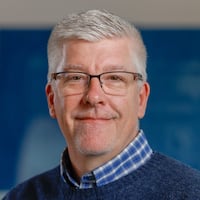Here’s a look at some stories from the week of Feb. 11-17.
Feb. 12, 1939: Wright Library to open in Oakwood
A dedication ceremony for a new Wright Library was being planned, with Arthur Claggett, superintendent of Oakwood schools, as the master of ceremonies.
About 12,000 books were moved from the old library location on Park Avenue to the new building in Wright Park, at Far Hills and Aberdeen Avenues in Oakwood. Wright Park was named for Katharine Wright, Orville and Wilbur Wright’s sister.
The new structure, which cost $40,000, was built of brick and concrete in an Old English (Tudor) style.
The building is now on the National Register of Historic Places.
Feb. 13, 1950: Typewriting-bookkeeping combined in NCR machine
A new product, a typewriting/bookkeeping machine, was introduced by the National Cash Register Co. during a meeting of 80 managers.
The machine, the result of $5 million in engineering and development, combined all the important features of electric typing and bookkeeping methods in one unit.
Executives said that 8,000 new tools were required for the new machine and 500,000 hours were used in engineering design and more than 1 million hours went towards tool production.
Other product developments discussed at the meeting included a new automatic check feeder and improvements on a bank proof machine.
Feb. 14, 1960: Mound Lab puts out welcome mat for science-minded students
Mound Laboratory, an Atomic Energy commission site, opened its doors to area students in observance Science Youth Day held on Thomas Edison’s birthday, Feb. 13.
The laboratory was operated for the Atomic Energy Commission by the research and engineering division of Monsanto Chemical Co. with the goal of producing neutron sources for starting atomic reactors and advancing research of radioactive materials.
More than 150 teachers, science students and editors of high school newspapers representing 22 Miami Valley high schools participated.
Following a lecture by Dr. LeRoy Jones, section leader in the research division, the group was taken on a two-hour tour during which they passed through several laboratories where workers explained their jobs or performed demonstrations.
Feb. 15, 1970: Chaminade beats Roth to finish season unbeaten
The Chaminade Eagles basketball team defeated Roth 64-62 at University of Dayton Arena to finish their season undefeated. A crowd of 11,469 attended the game, which was the second-largest crowd in Ohio prep history for a regular season game.
It was the 18th straight victory for the No. 1 state-ranked Eagles and Coach Jim Turvene. The Roth Falcons finished the season with a record of 15-3.
Dan Gerhard, who wasn’t supposed to take the shot, his the game-clinching 15-foot jump shot with four seconds remaining.
Gerhard explained after the game that Ted Wuebben was supposed to take the last shot.
“The ball came to me and I looked for Ted and Terry (Tyler) too, but Roth was all over them. So I took a couple more dribbles, moved a bit closer to the basket ... and let fire,” he said after the game.
Gerhard, the team’s leading scorer with 22 points, struggled in the first half before going 8-of-12 in the second half.
The largest crowd at the time was the 1958 Middletown-Hamilton matchup at Cincinnati Gardens, featuring Jerry Lucas in his senior year, which drew 13,469.
Feb. 11, 1980: Yellow Pages pioneer L.M. Berry dies
Dayton business tycoon Loren M. Berry Sr., who created Yellow Page advertising in the phone book and became a millionaire, died in Dayton on Sunday, Feb. 10, 1980. He was 91.
Although raised in Wabash, Indiana, Berry decided after college to live in Dayton because he thought it was becoming “the center of this new world industry (aviation).” He arrived in Dayton in 1910 with $22 in his pocket.
Berry was also involved with politics, at one point serving on the Republican National Finance Committee. Berry gave generously to Richard Nixon’s campaign, including more than $100,000 in 1972. The two men became good friends. President Gerald Ford was also a personal friend.
The Loren M. Berry Foundation channeled several million dollars to universities and charitable causes.
Berry said about Dayton, “It’s a wonderful city, not only for a man in business to make headquarters, but a wonderful place to live and raise a family.”
About the Author





